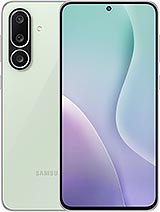Samsung Galaxy S11+ to have a 108MP Bright HM1 sensor with Nonacell tech

Perhaps for those of you who are following the leaks surrounding the upcoming Galaxy S11-series already know that the S11+ will come with a custom 108MP sensor and not the one that has been already released. But thanks to a renown Samsung leakster, we now have a bit more details to work with.
S11+ unique new generation 108MP sensor seems to be called ISOCELL Bright HM1. It is a more advanced Nonacell technology than Tetracell. It merges a cluster of 9 pixels into a single pixel and allows 0.8μm pixels to be converted to 2.4μm pixels, greatly improving Low-light shoot
— Ice universe (@UniverseIce) December 18, 2019
Two days ago Ice Universe teased that the 108MP camera will effectively shoot in 12MP by combining 9 instead of 4 adjacent pixels. Samsung calls this Nonacell and succeeds the Tetracell tech that has been used for years now and is also known as Quad Bayer. The sensor itself is called ISOCELL Bright HM1, and comes to succeed the Bright HMX that debuted on the Mi Note 10.
Let's do the math now. Since the sensor is merging 9 pixels into one, you'd get 12MP photos and the actual pixels size would be 2.4µm (0.8µm x 3) - that's significantly larger than the current quad-bayer implementations having 1.6µm effective pixels. This would ensure stellar low-light performance and dynamic range in all scenarios.
Can't wait to see what the new sensor is capable of. Just a little over two months until the S11-series see broad daylight.
Related
Reader comments
- AnonD-784107
- 22 Dec 2019
- ssp
What sort of annoys me. Is the S10 although is very good phone. But for the tenth anniversary phone. It was a S9 with slightly better camera. And finger print in screen reader. Now i would expect samsung to do amazing camera thats in the S11 on the S...
- luka3rd
- 21 Dec 2019
- JFk
Don't delude yourself that any software can make it even comparable to DSLR... I see many people here belive so. As soon as you think like that, you should know you know nothing about photography. Software and hardware of an DSLR are entirely detic...
- Anonymous
- 20 Dec 2019
- XRg
Never said Smartphones are beating Dslr image quality purely based on sensor technology (hardware). It's a combination of hardware and software that has helped them achieve similar results (in certain low light scenarios, not all)








 Samsung
Samsung Xiaomi
Xiaomi Sony
Sony Samsung
Samsung Samsung
Samsung

